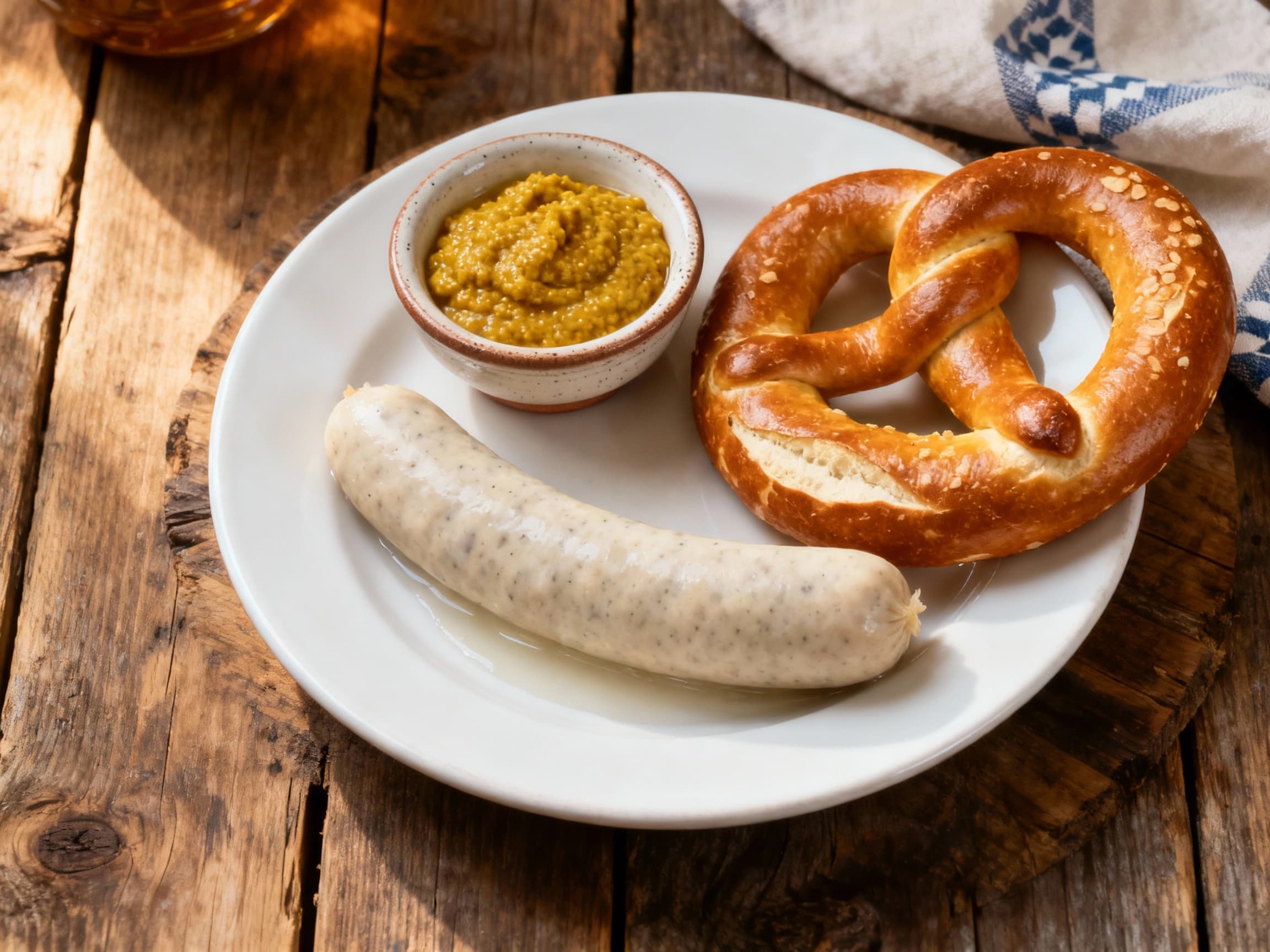
Münchner Weißwurst
Münchner Weißwurst
- Country
- Germany
- Region
- Munich
- Recipes
- 3 Recipes
Dish information
Münchner Weißwurst, the 'White Sausage of Munich,' is an emblematic culinary creation deeply rooted in Bavarian tradition and identity. Its story dates back to 1857, purportedly invented by a Munich butcher named Sepp Moser. Legend has it that on Carnival Sunday, Moser ran out of casings for his standard sausages. Instead, he used a larger, blanched beef cáñamo casing, filled it with finely minced veal and pork back fat, seasoned with parsley, lemon, mace, cardamon, and ginger, and then gently simmered it in water, creating the pale, tender sausage we know today. This method avoided the strong frying or grilling that could cause the casings to burst. The Weißwurst's unique preparation and serving ritual are central to its cultural significance. Traditionally, it is not eaten before noon, a custom said to originate from a time before modern refrigeration, where fresh sausages were best consumed shortly after preparation. They are heated in simmering, unsalted water (never boiled) and served in their broth. The authentic way to eat them involves 'sucking' the meat out of the casing, or more commonly, cutting them lengthwise and peeling the skin away before enjoying. This is typically accompanied by sweet Bavarian mustard (Süßer Senf), a fresh pretzel (Brezn), and a glass of Bavarian wheat beer (Weißbier). The Weißwurst symbolizes the convivial spirit and gastronomic heritage of Munich and Bavaria. It's a dish savored in beer gardens, traditional Wirtshäuser (taverns), and homes, embodying a sense of gemütlichkeit – a uniquely German concept of warmth, friendliness, and good cheer. Its protected status within Bavaria ensures that only sausages produced according to the traditional recipe and methods can bear the name.
Timeline
Sepp Moser, a Munich butcher, is said to have invented the Münchner Weißwurst, filling veal and pork into casings and poaching it.
The Weißwurst becomes a popular delicacy in Munich's traditional beer halls and taverns.
The tradition of not eating Weißwurst before noon starts to become firmly established, though its exact origins are debated.
Modern refrigeration and preservation techniques make the 'no noon' rule more flexible, yet it remains a strong tradition.
The popular annual 'Weißwurst' festival begins, celebrating this Bavarian culinary icon.
Münchner Weißwurst is registered as a Protected Geographical Indication (PGI) by the European Union.
International recognition grows, with food critics and tourists seeking out authentic Weißwurst experiences in Munich.


